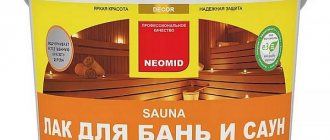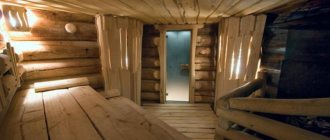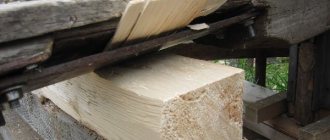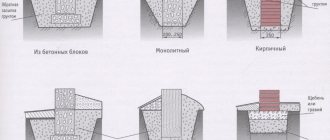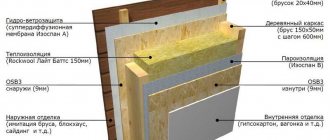Why do you need a vapor barrier?
Each house has a certain microclimate. Comfortable living means having a bathroom or shower, a kitchen and other rooms with different humidity levels. During the cleaning process, the floors are washed.
Vapors and moisture generated indoors every day settle on the surface of walls and floors. Condensation causes the deterioration of flooring, subfloors, and other decking materials. The floor on the first floors in private sector houses is additionally exposed to moisture coming from below (from the ground).
A vapor barrier film (membrane) is used to create a protective barrier against steam and moisture. With its help, it is possible to neutralize negative factors affecting the microclimate of the home. At the same time, the floor will remain breathable.
Wooden buildings especially need vapor barrier. In houses made of concrete, a protective layer is also appropriate. This will reduce the humidity level in the room.
Vapor barrier materials
The selection of vapor barrier materials for flooring is impressive. In order not to make a mistake in choosing, it is worth considering the characteristics of each option.
Ordinary polyethylene film
This is a solution for those cases when it is not possible to purchase a special insulator. On the one hand, it creates a hydro- and vapor barrier. On the other hand, before using film, it is worth considering all the disadvantages of this option:
- polyethylene provides a greenhouse effect (this prevents natural air circulation);
- When installing a vapor barrier, it is necessary to leave a technical gap to drain condensate (due to the smoothness of the film surface, moisture rolls onto the insulation, which shortens its service life).
Vapor barrier film made of polyethylene
One side of the material remains smooth, the other has small fibers that retain condensation. This is an affordable insulator, but a significant disadvantage is the obstruction of the natural circulation of air masses, which is why the floor or wall stops breathing. Manufacturers solved this drawback by producing perforated film.
Polypropylene film
Unlike its polyethylene counterpart, a polypropylene product is more durable and resistant to atmospheric factors. The material itself has the ability to form condensation. Therefore, during its manufacture, a layer of viscose with cellulose is rolled. During installation, the anti-condensation side is laid down on the work surface. A ventilation gap is left between the heat insulator and the vapor barrier.
Diffuse membrane
This type is used when arranging residential premises or utility rooms. This is the best vapor barrier option. It perfectly retains vapors, thereby preventing premature destruction of the thermal insulation layer.
Depending on the number of layers and additives used, membranes are divided into several types. Among them there are multifunctional films that provide steam, hydro and thermal insulation.
- Membranes with a foil layer are produced to retain heat in baths and saunas.
- Perforated insulators provide increased steam permeability during operation under special conditions.
- A two-layer material is created by connecting smooth and rough layers with self-adhesive foil tape. The insulator has no punctures, cracks, breaks or other defects.
- Three-layer material is intended for baths and saunas. It is attached under the lining or finishing panels using a stapler or special tape.
The performance characteristics of the building and the service life of the floor depend on the correct choice of vapor barrier film.
Liquid rubber
Another option is liquid rubber. It covers the entire surface without leaving any gaps. The material is made from polymer substances and bitumen. Among the advantages: high elasticity, seamless coating of the working surface, universal purpose (steam, hydro, sound insulation).
Rubber is applied over large areas using an automated method. In small rooms, it is advisable to process the floor manually.
What is waterproofing?
Before moving on to considering various technologies, let's define what waterproofing is.
Waterproofing is a set of measures aimed at protecting building structures from the harmful effects of moisture.
Under the influence of moisture, the performance characteristics of building structures sharply deteriorate. When freezing, water that gets into the pores begins to expand, which leads to the destruction of even particularly strong structures. In addition, high humidity is the main cause of mold and the development of other microorganisms.
In order for waterproofing to fully fulfill its functions, the materials used must meet the following requirements:
- have a high degree of water resistance;
- have sufficient mechanical strength;
- maintain elasticity with a significant decrease in temperature;
- maintain its performance properties over a wide temperature range;
- be resistant to ultraviolet radiation and aggressive chemical compounds.
Only timely and high-quality waterproofing can protect building structures from atmospheric influences.
Types of waterproofing
Depending on the operating conditions, the waterproofing material can be:
- anti-pressure
. Belongs to the category of external insulation. Can withstand significant water pressure. Can be used for treating basements with high groundwater levels;
non -pressure Such materials are not designed to work under high pressure conditions;- superficial
. Such waterproofing is widely represented by roll and sheet materials on a bitumen or polymer basis; - anticapillary
. Used for processing porous materials. The principle of operation is based on clogging the pores of the material with special hydrophobic compounds. This treatment prevents moisture from penetrating deep into the structure; - complex.
Such materials provide the most complete protection of buildings and structures from the harmful effects of moisture. The main disadvantage of such materials is their high cost.
Before making the final choice of waterproofing, it is necessary to evaluate the operating temperature range and the intensity of mechanical stress. In addition, the presence of ultraviolet radiation and contact with aggressive chemical compounds is of great importance.
Laying vapor barrier on the floor
The vapor barrier layer is an integral part of the pie, which includes: joists, waterproofing, subfloor, insulation and finished floor. Before laying the vapor barrier, the surface is prepared. If it is wood from a new building, then it is impregnated with an antiseptic and coated with a layer of protective varnish.
When preparing the surface of a house in use, it is necessary to remove the old coating from the floors and other materials used previously. Before you start laying the pie, you need to check the strength of the joists and the rough foundation. They should not sag or show signs of destruction of the wood structure.
The vapor barrier is laid on a flat surface, previously cleared of debris. There should be no nails or other sharp objects on it that could damage the film. Before laying the material, check which side it should be laid on. If it is ordinary plastic film, then there is no difference. Izospan is placed with the light side to the insulation. The fleecy part of the insulator is placed towards the room. The foil material is laid with the shiny side facing the room.
If the floor structure is non-standard and has hard-to-reach places, it is advisable to coat them with additional bitumen vapor barrier.
When laying film sheets, an overlap is observed on the previous strip with an overlap of 15-20 cm. To create a strong connection, the joint is glued with foil tape.
When insulating the floor, a vapor barrier film is laid before and on top of the heat insulator. The role of insulation is assigned to mineral wool, polystyrene foam or polystyrene foam.
One of the technology requirements for laying vapor barriers is compliance with the sequence of formation of the cake.
- Lay waterproofing material on top of the subfloor.
- Lay a vapor barrier over the joists. The film is fixed with galvanized nails, adhesive tape or a stapler.
- Insulate the space between the joists using the selected type of heat insulator. The material should fit tightly to the joists, leaving no chance for the formation of cold bridges.
- Apply adhesive tape around the perimeter of the room at the bottom of the walls.
- Lay a vapor barrier membrane. The canvases are laid across the joists. The connections are made overlapping and the joints are sealed with foil tape. It is considered normal if the film sags slightly in the center.
- Secure the vapor barrier using a stapler.
- Secure the edges of the membrane extending onto the wall with adhesive tape.
The work is completed by installing the floor.
Vapor barrier with liquid rubber
The process of applying liquid rubber to create a vapor barrier layer takes place in several stages. The working surface is cleaned of debris and loose fragments. Next, open the container with the polymer-bitumen material and mix it thoroughly. Using a brush or roller, the composition is applied to the subfloor. The liquid vapor barrier has a thick consistency, so it is quite possible to use a spatula for the work.
The treated floors are dried. After drying, a film forms on the surface, which, thanks to its high adhesion, firmly adheres to the base. It does not allow moisture to pass through either from below or from above.
The average consumption of liquid rubber is 1-1.5 kg/1 m2. The thickness of the layer is 0.7 mm. To create a vapor barrier for a floor in a room of 10 m2, 10 liters of bitumen composition is sufficient.
When using liquid rubber, it is worth taking into account the type of finishing. The polymer-bitumen material is black in color and should not make undesirable changes to the finish.
FAQ
What is the difference between hydro and vapor barrier?
The main difference between materials is their functionality. Vapor barriers play the role of a protective barrier against the effects of steam accumulating indoors. The task of waterproofing comes down to preventing water from entering the room from inside, which is typical during precipitation. Externally, the materials are very similar, but their technical characteristics are different. Waterproofing must be moisture-proof, but still breathable. The vapor barrier membrane is completely water- and air-tight.
Is there a need for a ventilation gap between the vapor barrier and the floor?
A ventilation gap is left between the insulation material and the vapor barrier. In the case of the buffer zone between the vapor barrier and the finished floor, not everything is clear. Taking into account the principle of creating a pie, it turns out that a ventilation gap is necessary. It is possible to create it in a roof structure or in a wall. With gender it’s more difficult. Experts express the opinion that even when arranging a space, there is no guarantee that it will be sufficient for normal air circulation (if air flow can move there at all). Therefore, the finished floor is laid directly on the vapor barrier layer if a material that is inert to microbiological processes is used for the arrangement. Wood and other finishes with low moisture resistance are kept away from the insulator to prevent the development of mold when collecting condensate. The decision to create a ventilation gap is also influenced by the type of vapor barrier. Polypropylene and polyethylene films require space through which condensate is drained. When using liquid rubber there is no such need. Before you start laying the film, it is recommended that you read the instructions for the product, which prescribe the procedure for laying the vapor barrier.
What is the difference between waterproofing and vapor barrier?
The very definition of waterproofing implies constant direct contact of the surface with water. This could be groundwater pressure on the foundation or rain watering the roof; in this case, the source of moisture is not of fundamental importance.
The most important characteristics of waterproofing materials are their mechanical strength and elasticity. It is these indicators that determine how long a particular material can withstand the effects of moisture and provide reliable protection for building structures.
Vapor barrier provides protection of building structures and insulation from penetration of water vapor into the structure of the material. There is no direct contact with the liquid medium. The danger is that the vapors that have penetrated inside can condense, thereby causing destruction of the insulation or the structure itself.
Conclusion. Waterproofing protects the structure or insulation from the active effects of water. Vapor barrier - from moisture contained in warm air flows, condensing inside the thermal insulation layer or on structural elements. This is the main difference.

